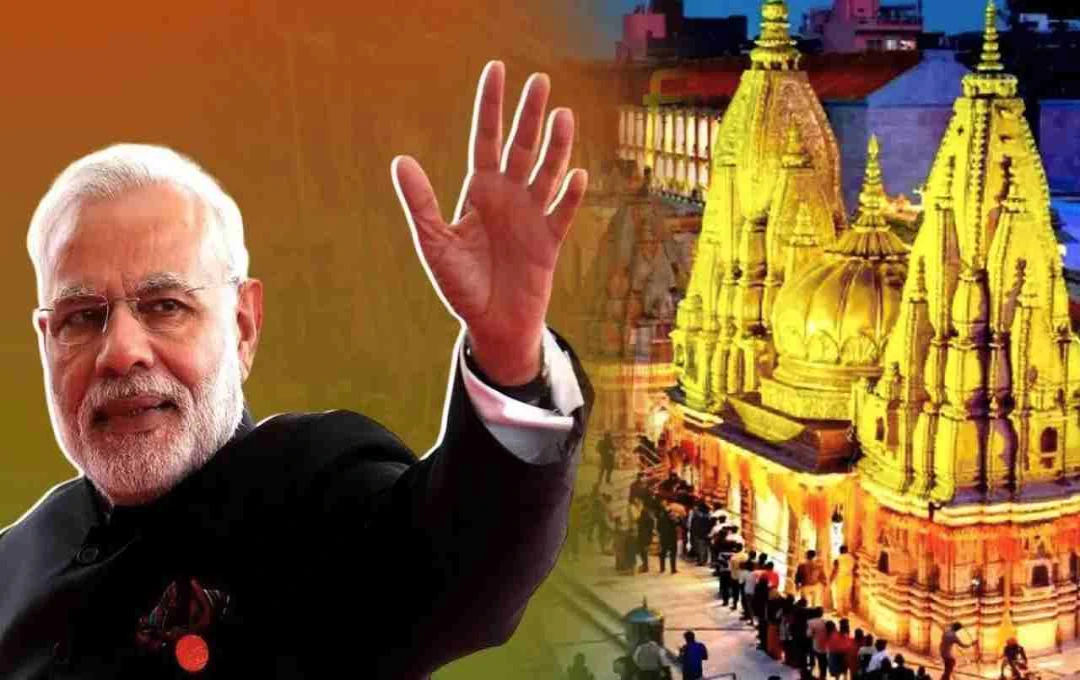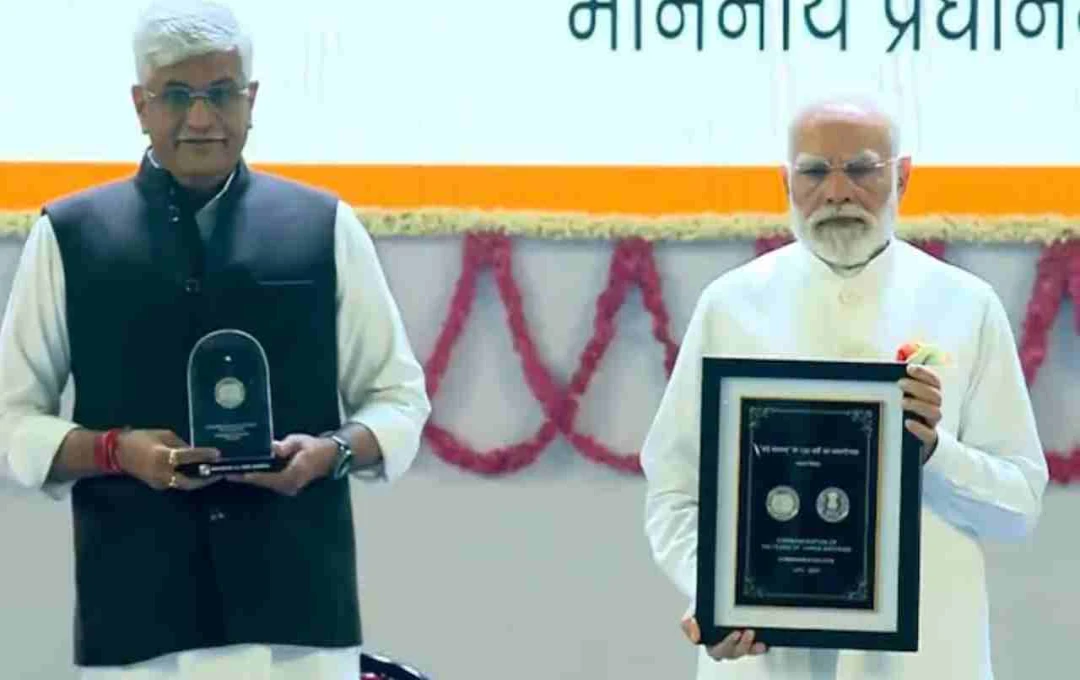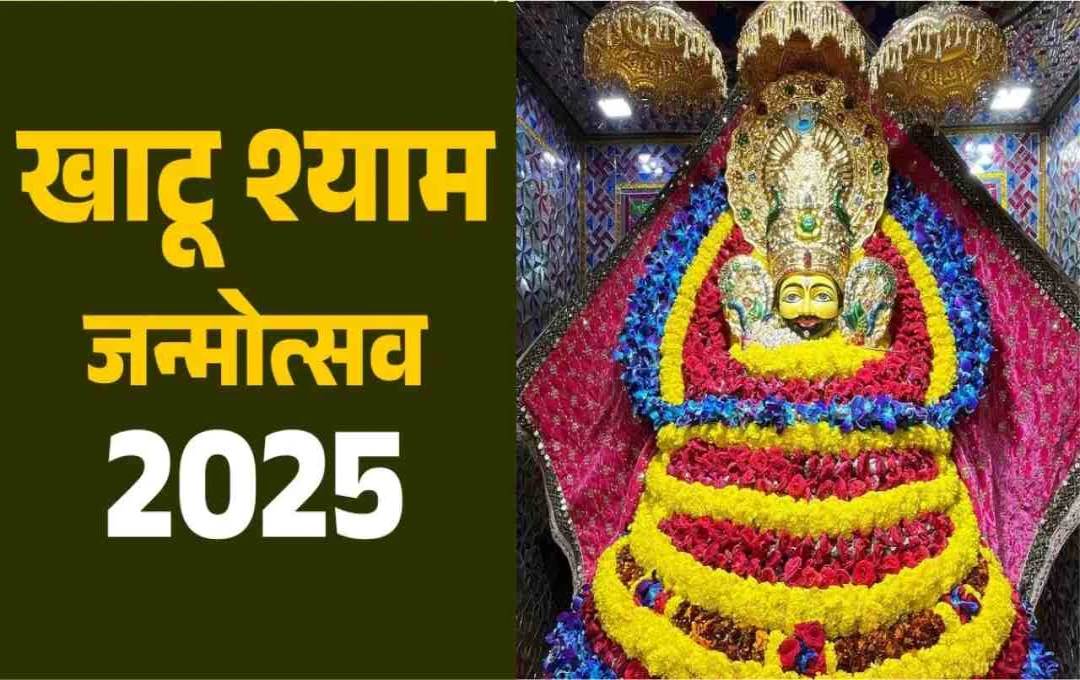The Shankaracharya Temple, situated on the Zabarwan Mountains in Srinagar, is an ancient Shiva temple and a cultural heritage of Kashmir. This temple holds significance from religious, historical, and tourism perspectives, attracting devotees for darshan during the Mahashivratri and Herath festivals every year.
Shankaracharya Temple: Srinagar, located in the Kashmir Valley of Jammu and Kashmir, is world-renowned for its picturesque valleys, lakes, and historical sites. Amidst these natural splendors, the Shankaracharya Temple, also known as Jyeshthaeshwar Temple, perched atop the Zabarwan mountain range, symbolizes Kashmir's religious, cultural, and historical heritage. Dedicated to Lord Shiva, the temple stands at an elevation of approximately 1,000 feet above the valley floor, giving it significance not only spiritually but also geographically.
The route to the temple begins from the Boulevard Road near Gagribal, which safely leads pilgrims and tourists to the summit. The temple offers a panoramic view of Srinagar city, allowing visitors to admire the natural beauty of Dal Lake and the Jhelum River.
Religious and Cultural Significance
The Shankaracharya Temple holds immense religious importance. A large number of Kashmiri Hindus visit here every year during festivals like Mahashivratri and Herath for darshan and worship. The area surrounding the temple is centrally protected by the Archaeological Survey of India and is considered a monument of national importance.
The management of the temple has been under a charitable trust since the 19th century. Currently, Karan Singh is the chairman of the trust. Along with its religious significance, the temple also symbolizes Kashmir's cultural identity.
Historical Background
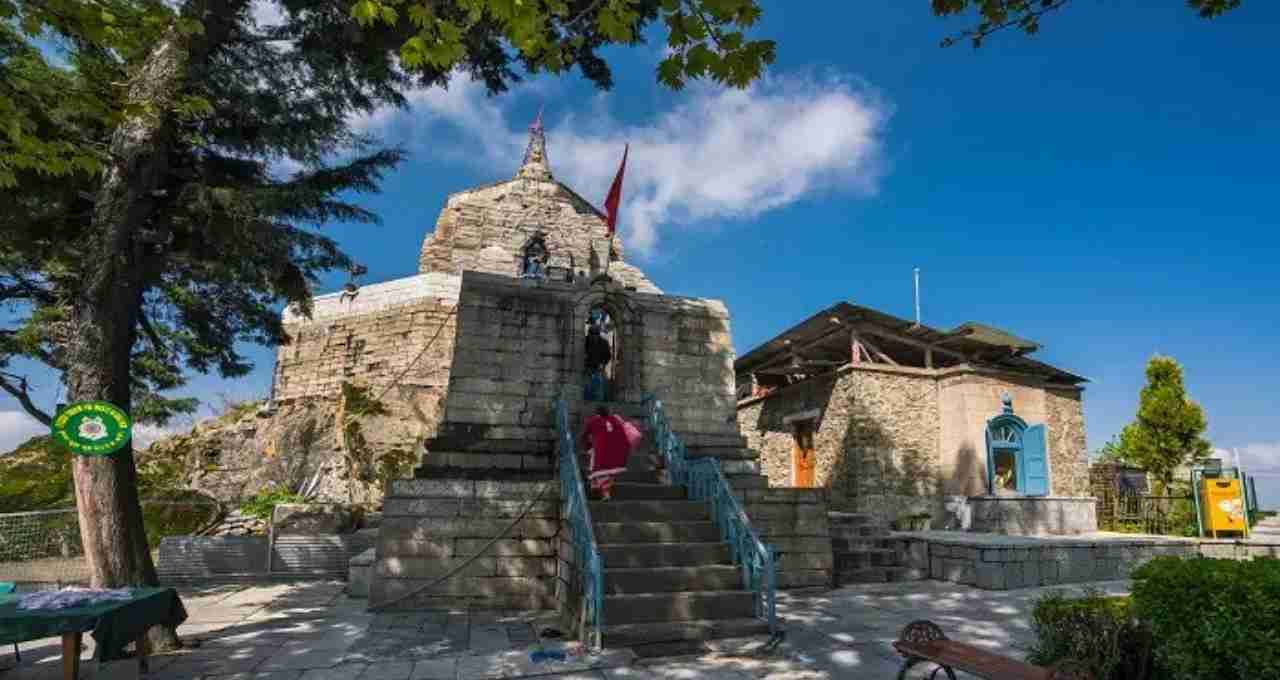
The Shankaracharya Temple is considered the oldest temple in Kashmir. It is located atop the Zabarwan mountain range, which was formed by volcanic activity during the Permian period. While there are differing opinions among historians regarding the exact date of the temple's construction, several research studies suggest it was built in 371 BCE by King Gopaditya.
Kashmiri historian Kalhana referred to it as 'Gopadri' or 'Gopa Hill'. According to him, King Gopaditya granted land at the foot of this hill to Brahmins and constructed the Jyeshthaeshwar Shiva temple at the summit. Some historians believe that the Alchon Hun king Mihirakula also contributed to the establishment of the temple.
In the 17th and 18th centuries, the temple underwent reconstruction and repair work, which led to its current structure. According to the Rajatarangini, several historical figures and events associated with the temple play a significant role in the cultural and religious traditions of Kashmir.
Shankaracharya and the Temple's Spiritual Significance
Kashmiri Hindus believe that Adi Shankaracharya visited this temple. This temple and the hill came to be known as Shankaracharya Hill after his name. It is said that Adi Shankaracharya unified the worship of Shiva and Shakti at this location and established the influence of Shaktism in the region.
From a literary perspective, the temple is significant. Poetic compositions like Saundaryalahari were composed here. The sanctity and spiritual importance of the temple have made it a special center for ascetics, yogis, and devotees.
Architecture and Design
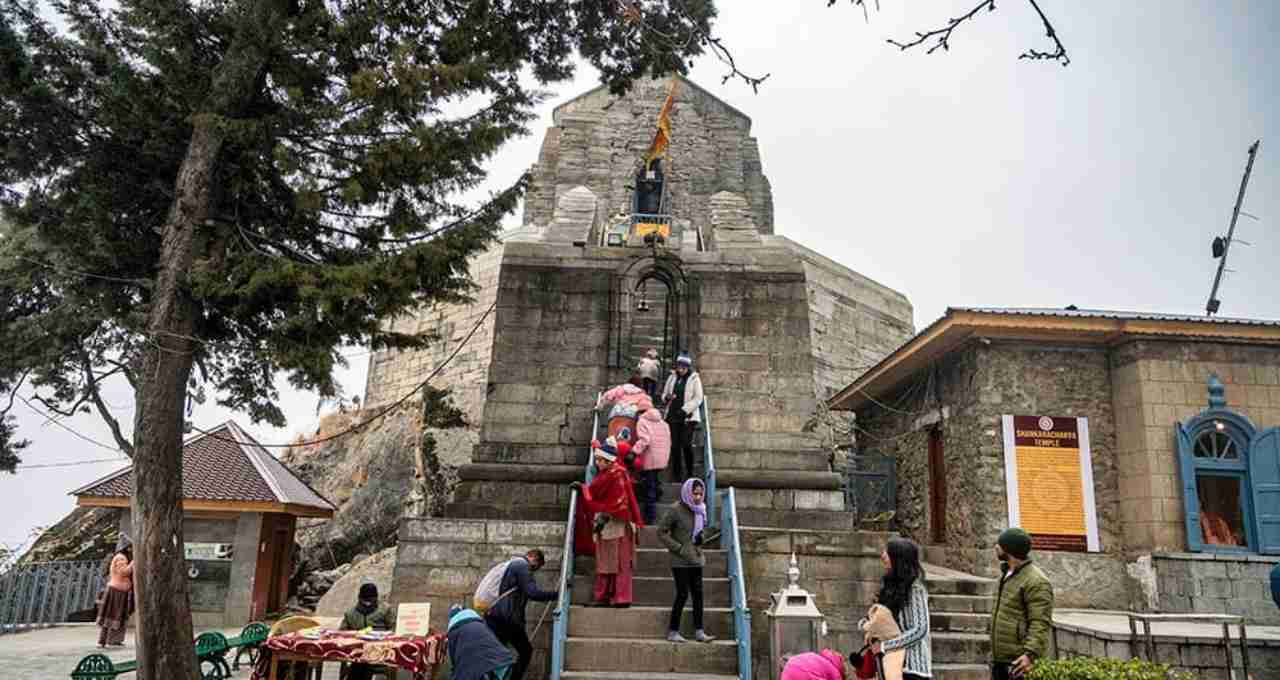
The architecture of the Shankaracharya Temple is unique and grand. It is built on a solid rock. The base of the temple is octagonal, with each side measuring 15 feet and a height of 20 feet. The octagonal structure at the base supports a square building at the top.
The center of the temple features a circular chamber with a diameter of 21.5 feet, and its entrance is 3.5 feet wide. Stone stairs surround the temple, leading devotees to the rooftop. The rooftop has four octagonal pillars that encircle the base of the Shivalinga. Artistic carvings and murals on the temple walls and pillars further enhance its architectural features.
Geographical Significance of the Hill
Shankaracharya Hill, also known as Sandhiman Parvat, Takht-e-Sulaiman, or Gopa Hill, is approximately 1,880 meters high. The rock formations of the hill are igneous in nature, resulting from volcanic activities during the Permian period. The diversity of flora, natural landscapes, and trekking opportunities make it a destination for religious pilgrimage as well as tourism.
In 1969, the Border Roads Organisation constructed a road to the temple, enhancing convenience for pilgrims. The road was primarily built for the installation of a communication tower but is now also used by pilgrims.
Modern Times and Tourism
Today, the Shankaracharya Temple has become a major center for religious and cultural tourism. Regular prayers are held at the temple, and it is a must-visit for pilgrims during the Amarnath Yatra. During occasions like Mahashivratri and Herath, the temple is specially decorated and illuminated.
The temple is part of the Indian tourism circuit, and visitors experience the wonders of Srinagar and its natural scenery. In 2021, the temple was specially illuminated during the COVID-19 vaccination campaign.
The Temple in Popular Culture
The influence of the Shankaracharya Temple is also evident in popular culture. It has been featured in Bollywood films such as 'Mission Kashmir' and 'Pukar'. Additionally, it is referenced in the 1974 song 'Jai Jai Shiv Shankar'. Historians and literary scholars have also described the temple's spiritual and cultural importance in numerous articles and books.
The Shankaracharya Temple is an integral part of Kashmir's cultural and religious heritage. It is not only a center for the worship of Lord Shiva but also showcases the historical and natural beauty of the region, attracting both devotees and tourists.



